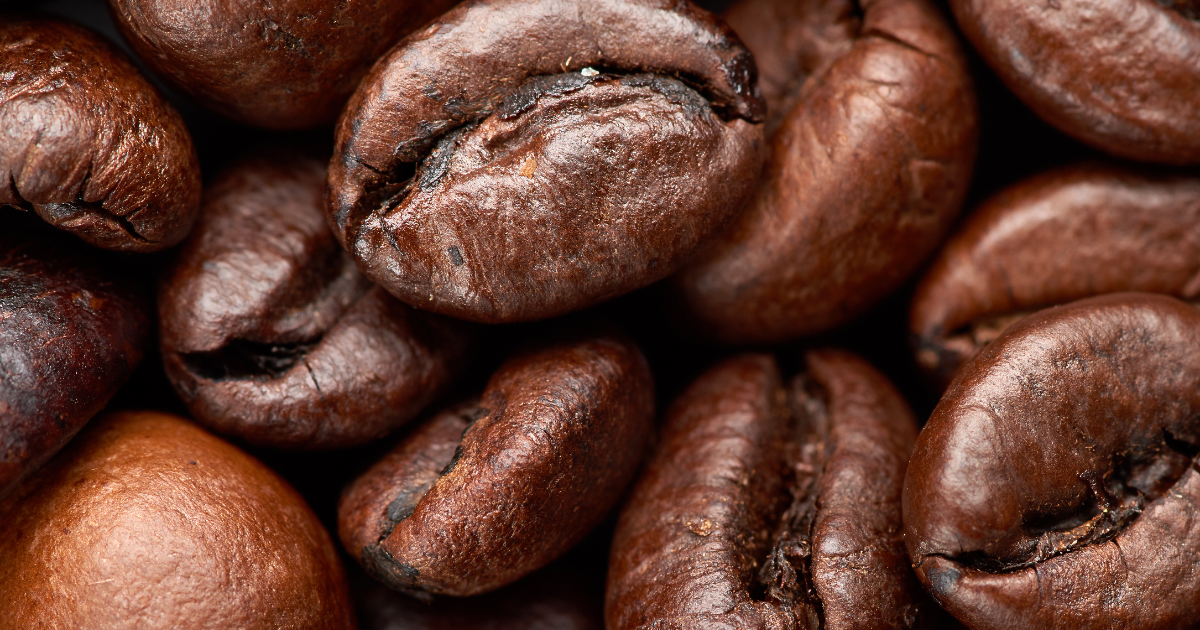In the pursuit of the perfect cup of coffee, enthusiasts meticulously select their beans, invest in high-quality grinders, and obsess over brewing methods. Yet, amidst this dedication, one profoundly influential element often remains overlooked or misunderstood: water. Far from being a mere inert solvent, water is an active ingredient, a crucial component whose mineral content, pH, and purity can dramatically transform the final flavor, aroma, and mouthfeel of your coffee. Ignoring water quality is akin to using premium ingredients for a dish but neglecting the seasoning; the fundamental taste profile will always fall short of its true potential.
Imagine painstakingly choosing a rare single-origin bean, grinding it to perfection, and employing a precise pour-over technique, only to find the resulting brew surprisingly flat, overly bitter, or strangely sour. The culprit might not be your beans, your grinder, or your method, but the very water you used. Standard tap water, while potable, varies wildly in composition from one region to another, carrying dissolved minerals and chemicals that interact directly with the delicate compounds in coffee. These interactions can either unlock intricate flavors or suppress them, creating a barrier between your desired taste and the actual outcome. Recognizing water’s pivotal role is the next frontier for discerning home brewers aiming for unparalleled quality.
This article delves into the art of water, exploring its fundamental properties and direct impact on coffee brewing. We will demystify key water characteristics, discuss how to assess your own water supply, and provide practical strategies for optimizing water quality to enhance your brew. From understanding mineral content and pH to exploring accessible filtration and mineralization techniques, this guide aims to empower home brewers to transform a neglected variable into a controlled asset. Mastering water quality is not an advanced technique but a foundational step, ensuring every bean’s true character can shine through consistently, leading to a truly refined coffee experience.
Understanding Water’s Core Properties: Beyond Just H₂O
Water is not uniform. Its chemical composition significantly dictates how it interacts with coffee solubles. Three primary characteristics are particularly important: hardness, alkalinity, and pH.
Hardness: Mineral Content and Extraction Efficiency
Water hardness refers to the concentration of dissolved minerals, primarily calcium and magnesium ions. These minerals play a dual role in coffee extraction.
- Temporary Hardness (Alkalinity): Primarily composed of calcium carbonate and magnesium carbonate. This type of hardness is directly related to water’s buffering capacity (alkalinity) and can be reduced by boiling.
- Permanent Hardness: Composed of calcium sulfate, magnesium sulfate, and chlorides. This hardness remains after boiling.
- Impact on Extraction:
- Calcium Ions: These are crucial for extracting organic acids and fats from coffee, contributing to a full body and sweetness. Too much calcium can lead to over-extraction and a chalky mouthfeel. Too little results in a weak, flat brew.
- Magnesium Ions: These ions are excellent at extracting fruity and floral notes, enhancing complexity and clarity. An optimal amount can bring out vibrant characteristics. Excess can cause an undesirable astringency.
- Ideal Range: The Specialty Coffee Association (SCA) recommends a total hardness (GH, or general hardness) of 50-175 mg/L (ppm) as CaCO₃. This range provides sufficient minerals for robust flavor extraction without causing scale buildup or imparting off-tastes.
Alkalinity: Buffering Capacity and Acidity Perception
Alkalinity, often referred to as carbonate hardness (KH), measures water’s capacity to neutralize acids. It’s essentially the concentration of bicarbonates, carbonates, and hydroxides in the water.
- Impact on Flavor: Alkalinity acts as a buffer.
- High Alkalinity: Excessive alkalinity will neutralize the desirable acids in coffee, making the brew taste flat, dull, and sometimes chalky. It suppresses bright, fruity notes and can lead to a lingering, unpleasant bitterness, as it encourages over-extraction of bitter compounds.
- Low Alkalinity: Insufficient alkalinity means the water has poor buffering capacity. This can result in a coffee tasting overly sour or aggressively acidic, as there’s nothing to temper the natural acids extracted from the coffee.
- Ideal Range: The SCA recommends an alkalinity of 40-75 mg/L (ppm) as CaCO₃. This range strikes a balance, allowing the coffee’s inherent acidity to shine without being overwhelming or completely suppressed.
pH: Acidity and Equipment Longevity
pH measures how acidic or basic water is on a scale from 0 to 14, with 7 being neutral. While related to alkalinity, pH is a measure of the hydrogen ion concentration, whereas alkalinity is a measure of buffering capacity.
- Impact on Flavor:
- Low pH (Acidic Water): Can make the coffee taste harsher, sharper, and more overtly acidic.
- High pH (Alkaline Water): Often results in a flat, bitter, or “baked” flavor in coffee, as the water’s basic nature clashes with the coffee’s natural acids.
- Impact on Equipment: Water that is too acidic (low pH) can corrode brewing equipment over time. Water that is too alkaline (high pH) and hard can lead to significant scale buildup, which is detrimental to machine longevity and heating efficiency.
- Ideal Range: The SCA recommends a pH of 6.5-7.5 (neutral). This range ensures flavor neutrality and minimizes equipment issues.
Assessing Your Water: The First Step to Optimization
Before you can adjust your water, you need to know its current state.
Testing Your Tap Water: Simple Methods
- Taste Test: A simple, though subjective, first step. Does your tap water taste clean, fresh, and neutral? Or does it have a metallic, chlorinated, or muddy off-taste? These sensory cues provide initial hints.
- Kettle Observation: If you use an electric kettle, observe scale buildup. A significant white, crusty residue indicates high mineral content (hard water). If there’s no buildup, your water might be too soft.
- Home Test Kits: Inexpensive test strips or liquid kits are available online or at hardware stores. These can provide a rough estimate of total hardness, alkalinity, and sometimes pH. While not laboratory precise, they offer a good starting point.
- Water Quality Reports: Many municipal water providers publish annual water quality reports (Consumer Confidence Reports in the US). These reports detail the mineral content and other chemical properties of your tap water. Search your utility’s website for “water quality report” or “consumer confidence report.”
Optimizing Your Water: Practical Strategies for Home Brewers
Once you understand your water’s profile, you can take steps to modify it for optimal coffee brewing. These strategies range from simple filtration to more advanced mineralization.
1. Filtration: Removing Undesirables
Filtration focuses on removing elements that detract from coffee flavor or damage equipment.
- Activated Carbon Filters (e.g., Brita, PUR pitchers):
- What they do: These common household filters are excellent at removing chlorine, chloramines, sediment, and some organic contaminants that cause off-tastes and aromas. They do not significantly alter mineral content (hardness or alkalinity).
- Benefits for Coffee: Eliminates unpleasant chemical tastes, allowing the coffee’s natural flavors to come forward.
- Limitation: Will not address issues with very hard or very soft water, or high/low alkalinity.
- Refrigerator Filters: Similar to pitcher filters, they primarily remove chlorine and sediment.
- Whole-House Filters: More extensive, removing contaminants from all water entering your home.
2. Mineralization: Building the Ideal Profile
If your water is too soft (lacking minerals) or has an unfavorable alkalinity profile, you might need to add or adjust minerals.
- Distilled or Reverse Osmosis (RO) Water + Mineral Additives:
- What they do: Distilled and RO water are essentially “blank slates” – almost pure H₂O with virtually no minerals. This allows for complete control over the mineral content. You then add specific mineral solutions to achieve the ideal coffee water profile.
- Benefits for Coffee: Provides ultimate control and consistency. Eliminates all unwanted minerals and contaminants.
- How to Do It:
- Buy Distilled/RO Water: Readily available at supermarkets.
- Add Mineral Solutions: Brands like Third Wave Water or Lotus Coffee Water provide pre-portioned mineral packets designed to be added to a gallon of distilled/RO water. These formulations are specifically designed to meet the SCA’s recommended water parameters for coffee brewing.
- DIY Mineral Solutions: For the more adventurous, you can create your own mineral concentrates using food-grade magnesium sulfate (Epsom salts) and calcium chloride, dissolved in water, and then dosed into distilled water. This requires precise measurements and calculation.
- Limitations: Requires buying or producing pure water and then adding minerals, which can be more involved.
3. Adjusting Tap Water (for specific issues):
For some, minor adjustments to tap water might suffice, rather than starting from scratch with pure water.
- Boiling (for temporary hardness): Boiling water for 5-10 minutes can reduce temporary hardness (bicarbonates), slightly lowering alkalinity. This is a simple trick if your main issue is overly high alkalinity.
- Baking Soda (for very soft water): For extremely soft water that results in harsh, overly acidic coffee, adding a tiny pinch of baking soda (sodium bicarbonate) can increase alkalinity and provide some buffering capacity. This requires very careful dosage, often less than 0.1 gram per liter, and is best done with a precise scale and test strips.
- Citric Acid (for very alkaline water): Conversely, if your water is very alkaline and makes coffee taste flat, a minuscule amount of food-grade citric acid can reduce pH and alkalinity. Again, extreme precision is necessary.
The Art of Consistency: Maintaining Water Quality
Optimizing your water is not a one-time event; consistency is key.
- Regular Testing: Periodically re-test your water, especially if you move, or if your municipal water source changes seasonally.
- Filter Maintenance: Replace activated carbon filters in pitchers or whole-house systems regularly according to manufacturer recommendations. A clogged filter is ineffective.
- Dedicated Water for Coffee: Consider having a separate filtered water pitcher or a dedicated container for your coffee brewing water to ensure it’s always optimized.
- Taste, Test, and Refine: The ultimate gauge is always the taste of your coffee. If your brew tastes off, and you’ve controlled for grind, temperature, and ratio, re-evaluate your water. Use your palate as your final quality control.
Unlocking Flavor: Water as the Core of Your Best Brews
The journey to crafting consistently exceptional coffee at home invariably leads to a deeper understanding of water’s pivotal role. Moving beyond the assumption that all water is created equal is a transformative step for any home brewer. By actively managing your water’s hardness, alkalinity, and purity, you transition from passively accepting its influence to consciously leveraging its power to enhance flavor. This seemingly simple element, when properly understood and optimized, becomes the unsung hero, unlocking profiles of sweetness, clarity, and vibrancy that might otherwise remain dormant within your chosen beans.
Embracing the art of water is not just about chemical precision; it’s about a holistic approach to brewing that recognizes the interconnectedness of all ingredients. Whether you choose to invest in a simple carbon filter, embark on a mineralization journey with distilled water, or simply boil your tap water, each deliberate action contributes to a more refined and consistent cup. This focus on the foundational quality of water ensures that every other effort—from precise grinding to meticulous pouring—is amplified, allowing the true essence of your coffee to shine through. Elevate your brewing by mastering water, and discover a new dimension of flavor in every single brew.

